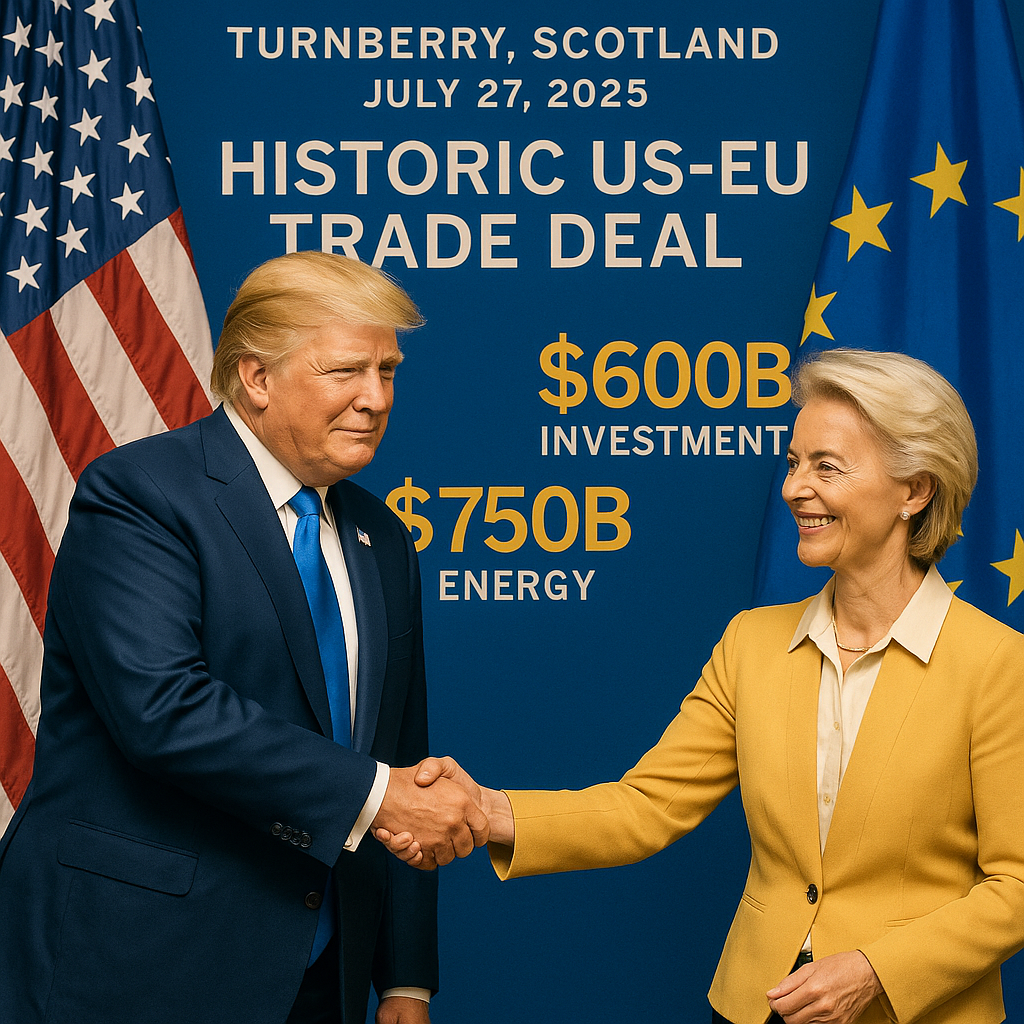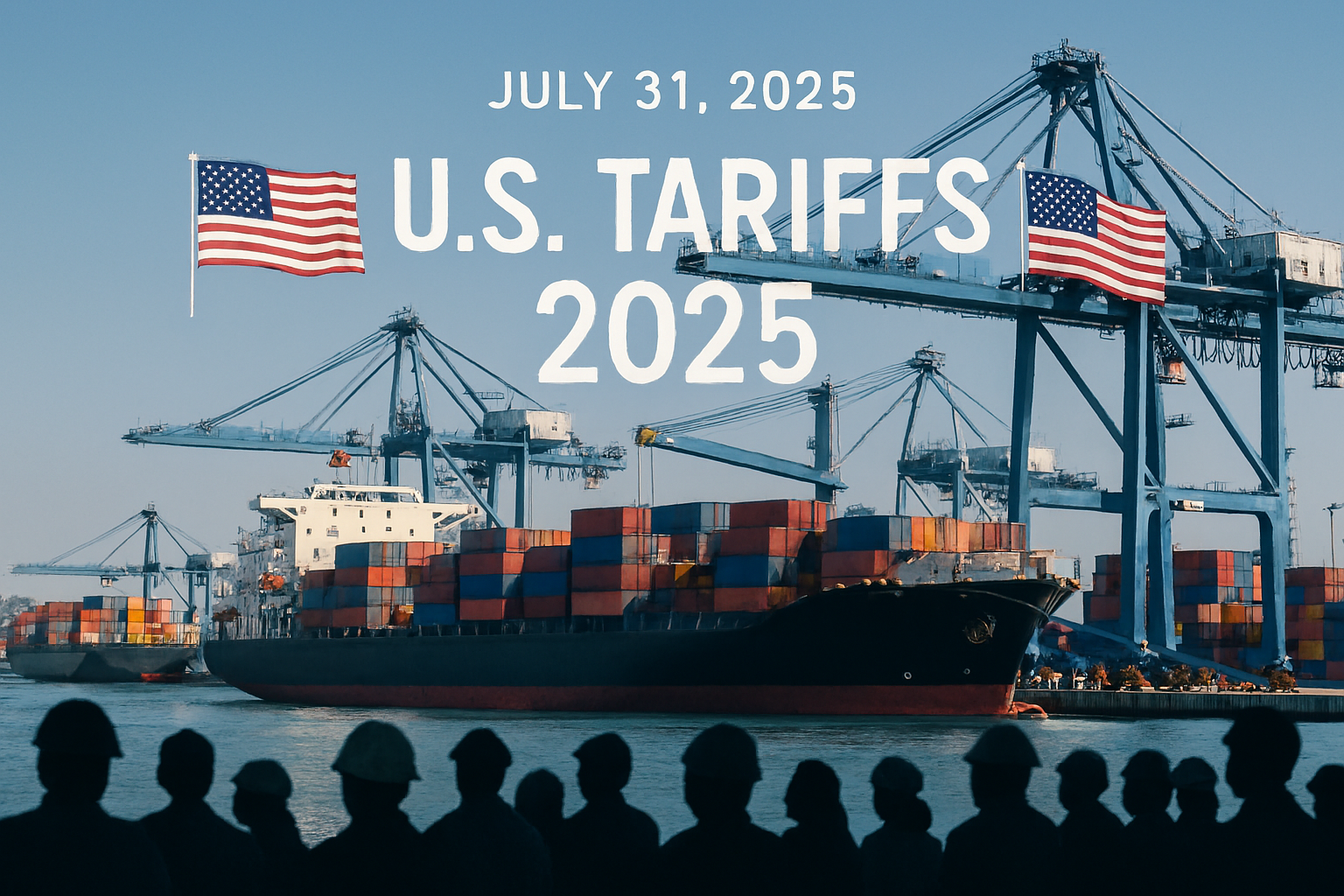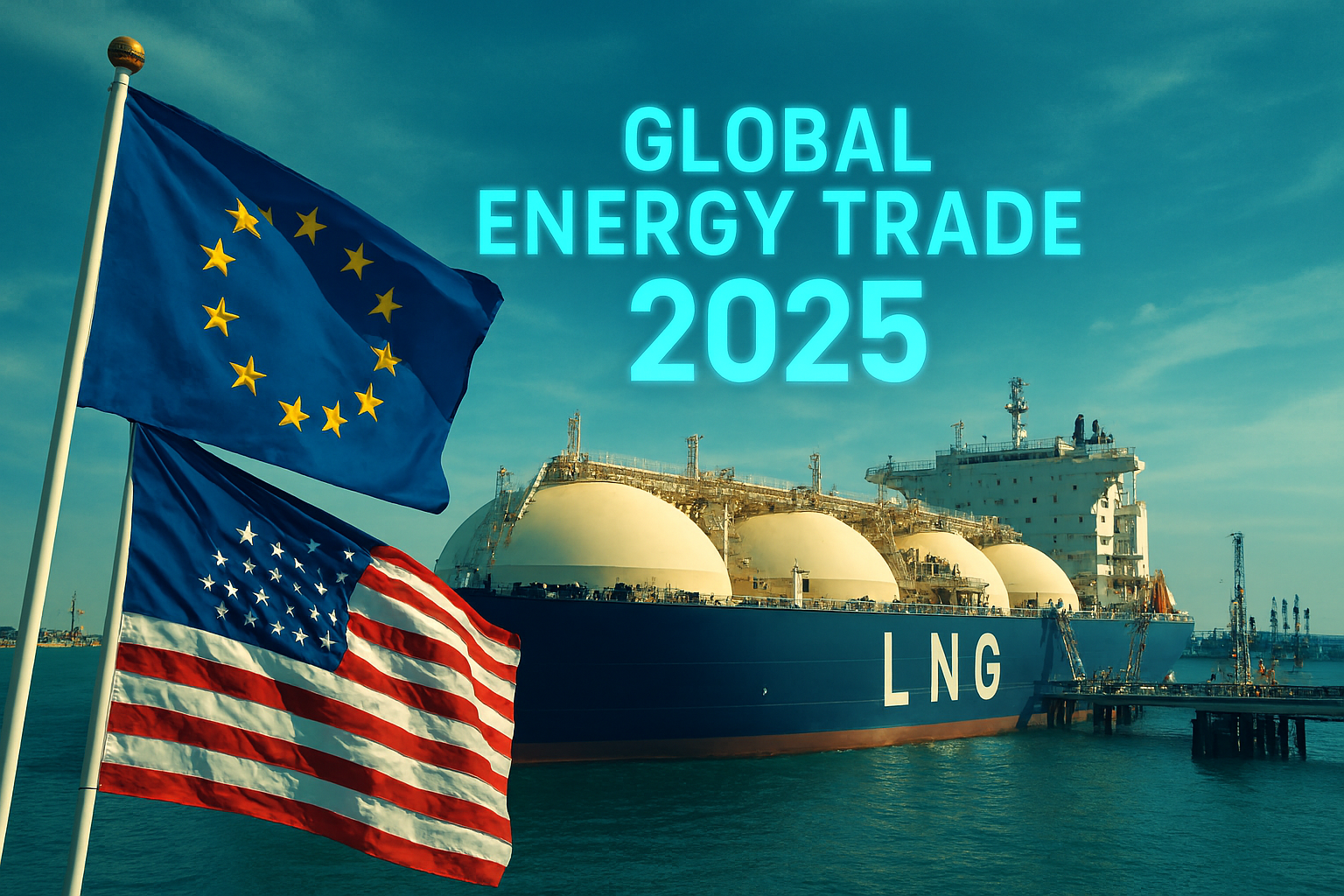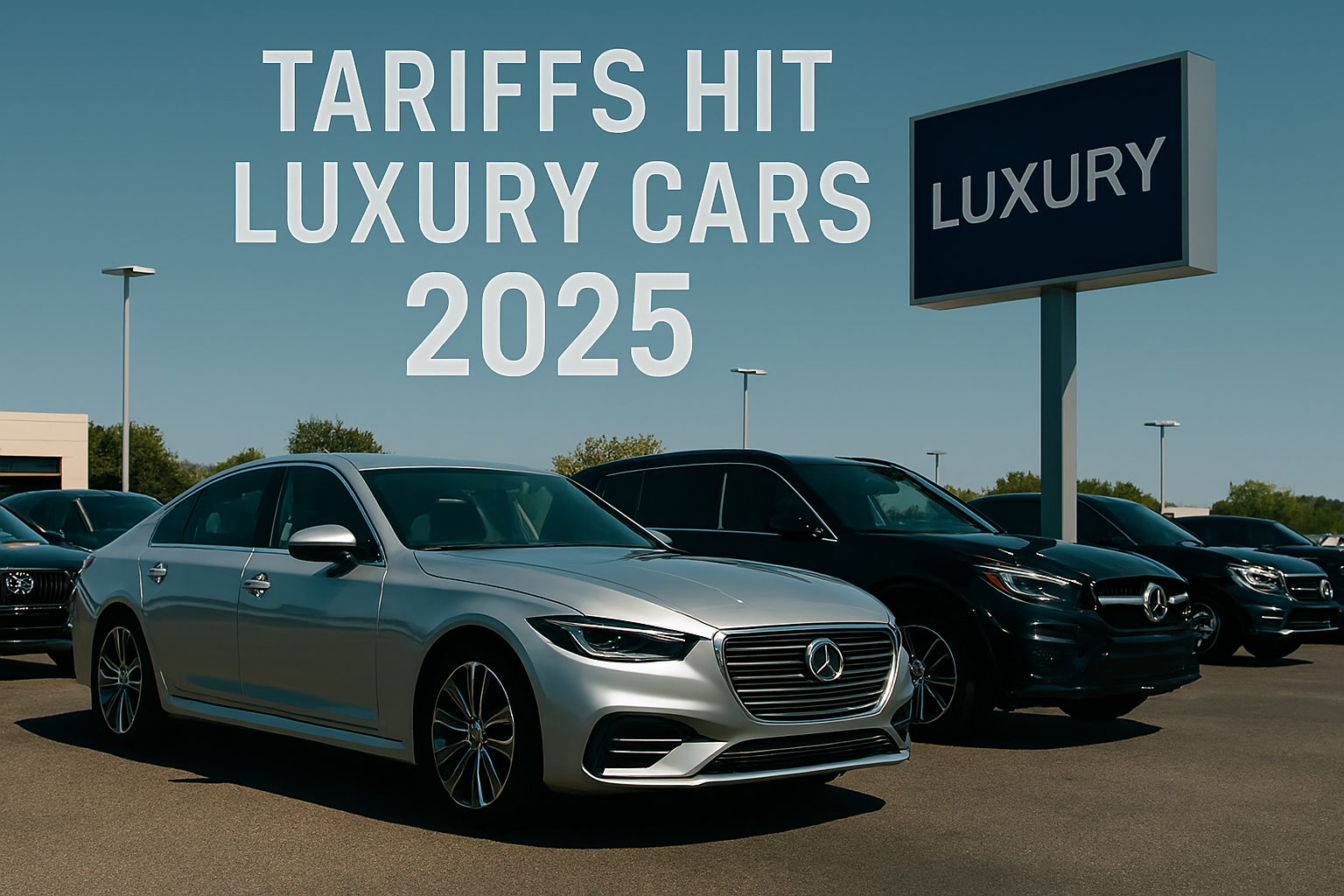US-EU Trade Deal 2025: $750B Energy Buy, $600B Investment

On July 27, 2025, President Donald Trump unveiled what he called the “biggest deal ever made” with the European Union, securing $750 billion in U.S. energy purchases and $600 billion in investments. But with a 15% tariff on most EU goods, is this US-EU trade deal 2025 a win-win or a delicate balancing act? Dive into the details of this landmark agreement.
In a pivotal moment for transatlantic relations, the US-EU trade deal 2025 was announced on July 27, 2025, following a high-stakes meeting between President Donald Trump and European Commission President Ursula von der Leyen at Trump’s Turnberry resort in Scotland. The deal, finalized days before an August 1 tariff deadline, commits the EU to buying $750 billion in American energy and investing $600 billion in the U.S., while imposing a 15% tariff on most European goods. This article explores the agreement’s key components, its significance, public and expert reactions, and the challenges ahead, as the U.S. and EU navigate their $1.97 trillion trade relationship.
Key Details of the Trade Deal
The agreement, described by Trump as a “massive” step toward rebalancing trade, includes:
- Energy Purchases: The EU will buy $750 billion in U.S. energy over three years, reducing reliance on Russian and Middle Eastern suppliers.
- Investments: An additional $600 billion in EU investments in U.S. industries, boosting jobs and infrastructure.
- Tariffs: A 15% baseline tariff on most EU goods, down from Trump’s threatened 30% but higher than the current 10%. Cars, aircraft, certain chemicals, generics, semiconductor equipment, and select agricultural products face zero tariffs.
- Exclusions: Pharmaceuticals are excluded, with Trump insisting on U.S.-based production. Steel and aluminum retain a 50% global tariff.
The deal addresses longstanding U.S. concerns about EU trade barriers, particularly in automobiles and agriculture. Trump highlighted that the EU sells “millions” of cars to the U.S. while restricting American car and farm exports, a point echoed by posts on X citing the EU’s $229 billion goods surplus with the U.S. in 2024.
Negotiation Context
The agreement follows months of tense negotiations, with Trump threatening 30% tariffs on EU imports starting August 1, 2025, after a 90-day pause expired in July. Earlier, he delayed 50% tariffs from June 1 to July 9, giving negotiators time to craft a deal. Von der Leyen, praised by Trump as a “tough negotiator,” pushed for a framework mirroring a recent U.S.-Japan deal, which lowered car tariffs to 15%. Despite three to four unresolved “sticking points,” the deal was finalized in a brief meeting, with Trump estimating a “50-50 chance” of success beforehand.
The EU, wary of a trade war, prepared $109 billion in counter-tariffs on U.S. goods like bourbon and soybeans, set to activate on August 7 if talks failed. Hungary was the lone holdout in approving these measures. The deal averts escalation, though sectors like steel and aluminum remain contentious.
Public and Official Reactions
The announcement sparked varied responses:
- Trump’s Perspective: Trump hailed the deal as a victory for “America First,” emphasizing job creation in red states and reduced EU trade deficits.
- EU Leaders: Von der Leyen called it a “rebalancing” effort, noting the deal’s fairness and the EU’s commitment to buy U.S. military equipment. French President Emmanuel Macron and German Chancellor Friedrich Merz signaled readiness to retaliate if terms were unfavorable, but welcomed the outcome.
- X Sentiment: @charliekirk11 celebrated the deal as “massive,” highlighting energy and military commitments. @dogeai_gov praised its strategic alignment with U.S. energy dominance. Critics like @amitisinvesting noted market volatility from tariff uncertainty.
- Industry Concerns: German automakers, facing 27.5% car tariffs, urged faster resolutions, with Volkswagen particularly vulnerable. The U.S. Chamber of Commerce warned that tariffs raise costs for small businesses.
Broader Implications
- Economic Impact: The $750 billion energy deal could shift global energy markets, reducing EU dependence on Russia, per a 2025 Bloomberg analysis. The $600 billion investment may boost U.S. manufacturing, though details on allocation and timelines are unclear.
- Trade Relations: The deal strengthens the $1.97 trillion U.S.-EU trade relationship, though the 15% tariff may raise consumer prices.
- Global Precedent: Following deals with Japan, the UK, and others, the EU agreement signals Trump’s tariff-driven strategy works, though critics argue it disrupts supply chains.
- Political Unity: Trump’s trade pressure has unified EU states, with Germany and France collaborating closely, per a Council on Foreign Relations expert.
Challenges Ahead
Unresolved issues include:
- Sector-Specific Tariffs: Steel and aluminum tariffs (50%) remain a sticking point, with no concessions in the deal.
- Implementation Details: The $750 billion energy and $600 billion investment commitments lack clear timelines, raising skepticism about enforcement.
- Retaliation Risk: EU counter-tariffs, though paused, could resurface if the deal falters, per ING’s Carsten Brzeski.
- Legal Hurdles: A federal appeals court case on July 31, 2025, may challenge Trump’s tariff authority, potentially invalidating his April 2 tariffs.
Conclusion
The US-EU trade deal 2025, announced on July 27, 2025, marks a significant step in rebalancing transatlantic trade, with the EU committing to $750 billion in U.S. energy purchases and $600 billion in investments. While the 15% tariff avoids a costlier trade war, unresolved issues and high sector-specific tariffs keep tensions alive. As both sides navigate this complex agreement, its success hinges on clear implementation and mutual cooperation. Share your thoughts on this deal below, and stay tuned for updates on global trade.










